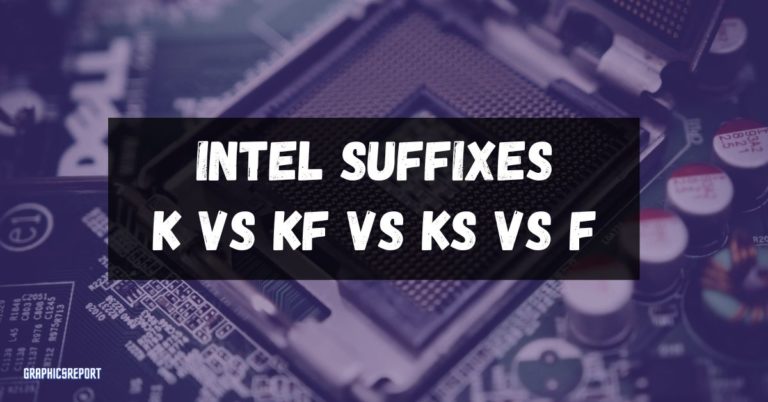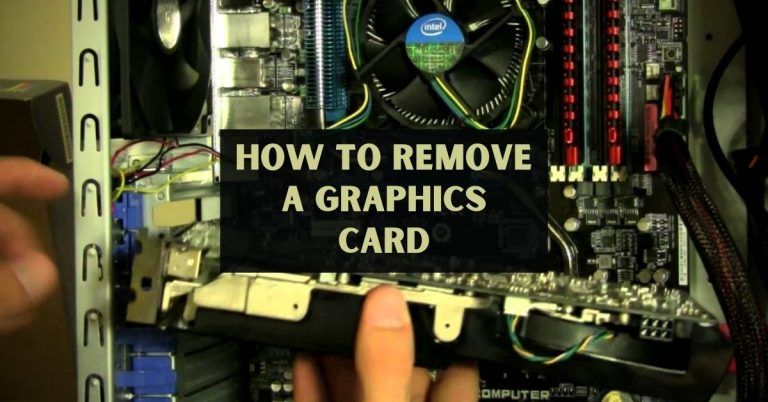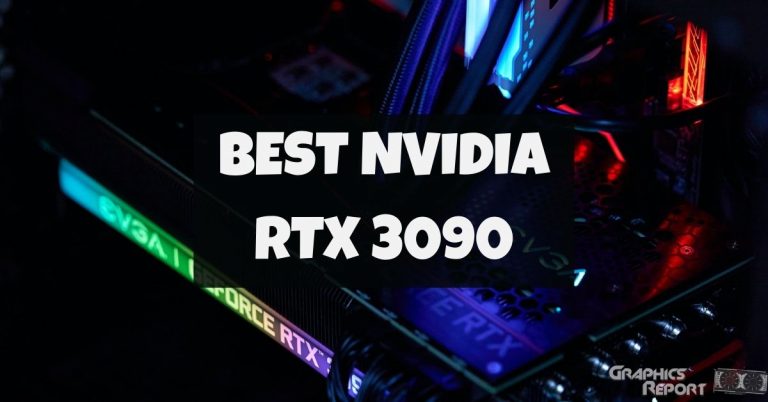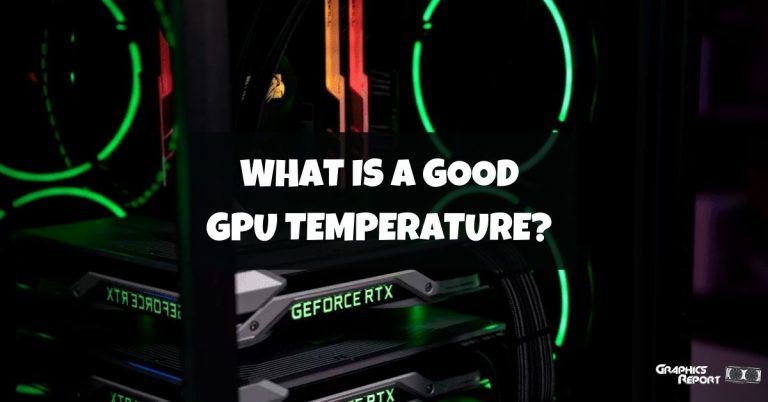
All modern games are made with the 16:9 aspect ratio in mind, with some allowing scalability up to 21:9 for ultrawide monitors. Contrarily, most older titles made for PC and console had a 4:3 aspect ratio, so playing old games these days raises a new problem.
Fast forward to 2023; all displays have a new standard that is, 16:9 so games that run on the old 4:3 or 5:4 aspect ratios do not play properly on today’s TVs and monitors.
Now comes in our hero and saviour: GPU Scaling. All modern cards come with this feature built-in. It allows old applications to be scaled properly on modern displays with clashing aspect ratios.
It also accounts for both the vertical and horizontal positions and adjusts the application to fit within a modern aspect ratio accordingly without any stretching or weird distortion. For example: playing a 4:3 game on a recent 16:9 4K monitor.
What Exactly is GPU Scaling?
It is a feature present in every modern video card. It allows you to play games at original quality without losing any details at whatever resolution you want, regardless of the game’s native output.
It effectively “scales” the graphics on your screen to fit your monitor and enables you to retain all the detail and quality of the game.
This feature was made to allow older square aspect ratio games to fit best on modern wide and ultrawide displays.
It scales games running on 4:3 and 5:4 aspect ratios to run at high quality on 16:9 and 21:9 displays with either black borders (both horizontal and vertical) around the game’s window or by stretching the game to fit any modern display.
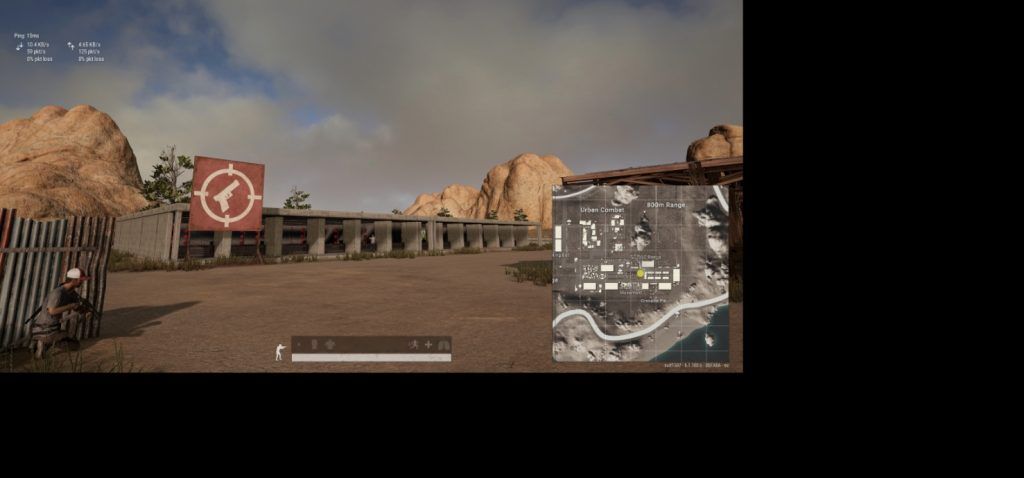
The choice is in the player’s hand. Some players want to experience the game classically by playing with a 4:3 aspect ratio with black borders around the game.
In contrast, some players demand the most up-to-date stretched aspect ratio for a better FOV and gameplay experience. Both AMD and Nvidia’s graphic cards allow you to use this feature to upscale the game from its native output to fit your desired resolution and aspect ratio best.
GPU scaling also aims to get rid of any weird image stretching issues and blurring in your game. Since you are essentially forcing the game to run at a different output than it was meant to, you are bound to face some distortion and possibly poor image quality, and a pixelated result. It works to reduce that as best as it can and imitates those games to be playable on a modern display without looking like garbage.
Is GPU Scaling Necessary?
Scaled graphics are not entirely necessary because it is of no use in modern titles that are already made to run on ultrawide displays but, if you plan on playing older games and want to preserve their quality while playing them without any weird image distortion, inadequately stretched out resolutions, or poor quality output than this feature suddenly becomes vital for an enjoyable experience.
The biggest advantage that this brings is allowing 4:3 games to run at an almost native quality on displays that aren’t 4:3 or any square aspect ratio for that matter.
Stretching a square image on a rectangular display would cause strange artifacts and distort the image output to the point where it would just look like a weird gallop of unorganized pixels.
Some people like their games to look more old school and want to play with the original aspect ratio, for those you can preserve the original aspect ratio and allow your graphics card just to put up black bars around your game while you are playing in fullscreen mode. This helps you maintain the classic look without losing any of its functionality.
Recommended Reading:
However, often the game’s resolution wildly contrasts your monitor’s resolution, i.e. when the game has a smaller resolution than your monitor.
In these cases, you’d want it to be centered on the screen with appropriate black bars filling the rest of your monitor, so your game always stays perfectly in the center of its window on your screen and does not look blurred or pixelated.
GPU scaling also allows you to take any mismatched aspect ratio game and scale it all the way up to be displayed on a wide or ultrawide display. But simply stretching it to fit your display is not the best way to scale your graphics and the result can be poor, similar to how your monitor would scale the game.
All modern displays automatically scale whatever is on the screen to be displayed in the best way possible, but they are often terrible at it.
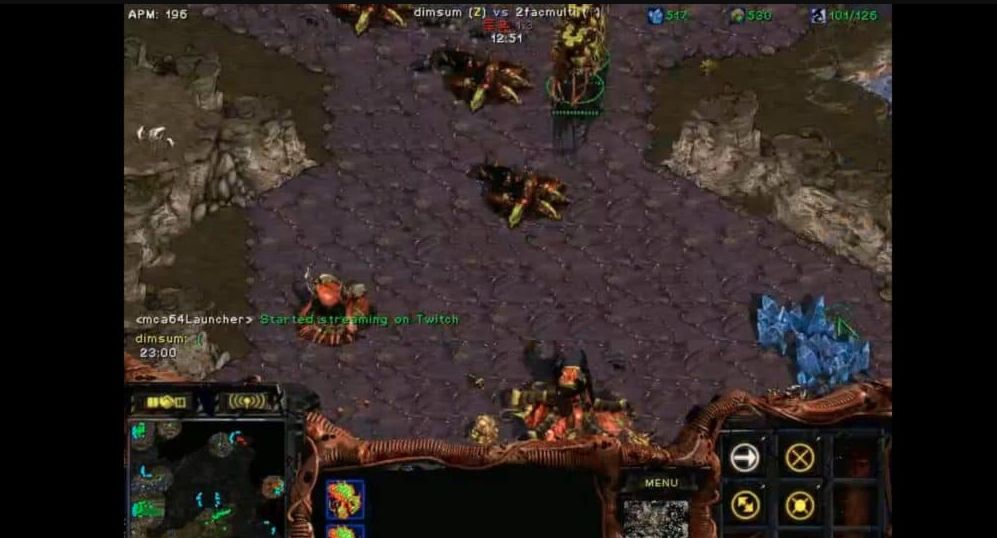
The results can be absolutely unplayable with completely stretched-out resolutions and inaccurate colors along with poor image quality. This is why graphics-based scaling is preferred over your display’s built-in methods.
Graphics-based scaling becomes irrelevant when we account emulators into the equation. Emulators already come with proper scaling tools and even some enhancements that improve the gameplay experience considerably from the original console.
Here, GPU scaling won’t do anything since you don’t need it to do anything here, and in fact, if you force it you’d probably end up with a worse output than what your emulator is already displaying.
The biggest downside of using scaled graphics is input lag. Because your graphics card is working harder than it normally would to scale those graphics for you, a bit of latency comes into play here.
Now, this input lag is barely even noticeable while viewing pictures or watching videos but when it comes to actually playing games, it can sometimes have a clear-cut effect on your game and can make it feel sluggish or slow. More expensive monitors come with lower input lag (such as 1ms), so your chances of not noticing the input lag are best at the higher end of the spectrum.
Long story short, if you plan on playing games with a square aspect ratio and want the best experience possible, then GPU scaling is necessary for you and you should turn it on.
On the contrary, if you only want to play modern games that already support modern wide and ultrawide displays, or you will be playing on emulators, then this feature is certainly not a must for you.
Note: GPU scaling only works with digital inputs (HDMI, DVI, DisplayPort) and not with analog inputs (VGA). Your monitor must be connected directly to your graphics card for this to work.
Types of GPU Scaling
1- Maintain Aspect Ratio
As the name suggests, this method allows you to maintain the original aspect ratio of the game when you are playing in both fullscreen mode and windowed mode. Essentially, your graphics card scales up the image to fit your monitor’s height as best as possible while preserving the original aspect ratio; the space that is left unfilled on the left and right by the game is then filled with black bars.
“Maintain Aspect Ratio” also works nicely on very low-end hardware because you are just stretching the game’s original output to fit a bigger display without messing with anything else. Older titles that don’t have any widescreen support or at least an easy-to-implement widescreen option can also benefit from this to fit modern displays best.
2- Full Panel
Full panel stretches out the game to fit your display regardless of whatever resolution you are playing at. The result, however, can be a blurry and distorted output because you are forcing the game’s aspect ratio to change and adapt to a newer aspect ratio that it does not support.
If you really hate black bars and want your game to fit edge to edge on your 32” 4K ultrawide monitor at all costs, then Full Panel is the way to go for you.
3- Center
Centred scaling places the game dead centre in the middle of your screen and displays black bars all around it to fill up the rest of your display. Centred is ideal if your game’s resolution is lower than your display’s and you still want a sharp image with most of the details preserved.
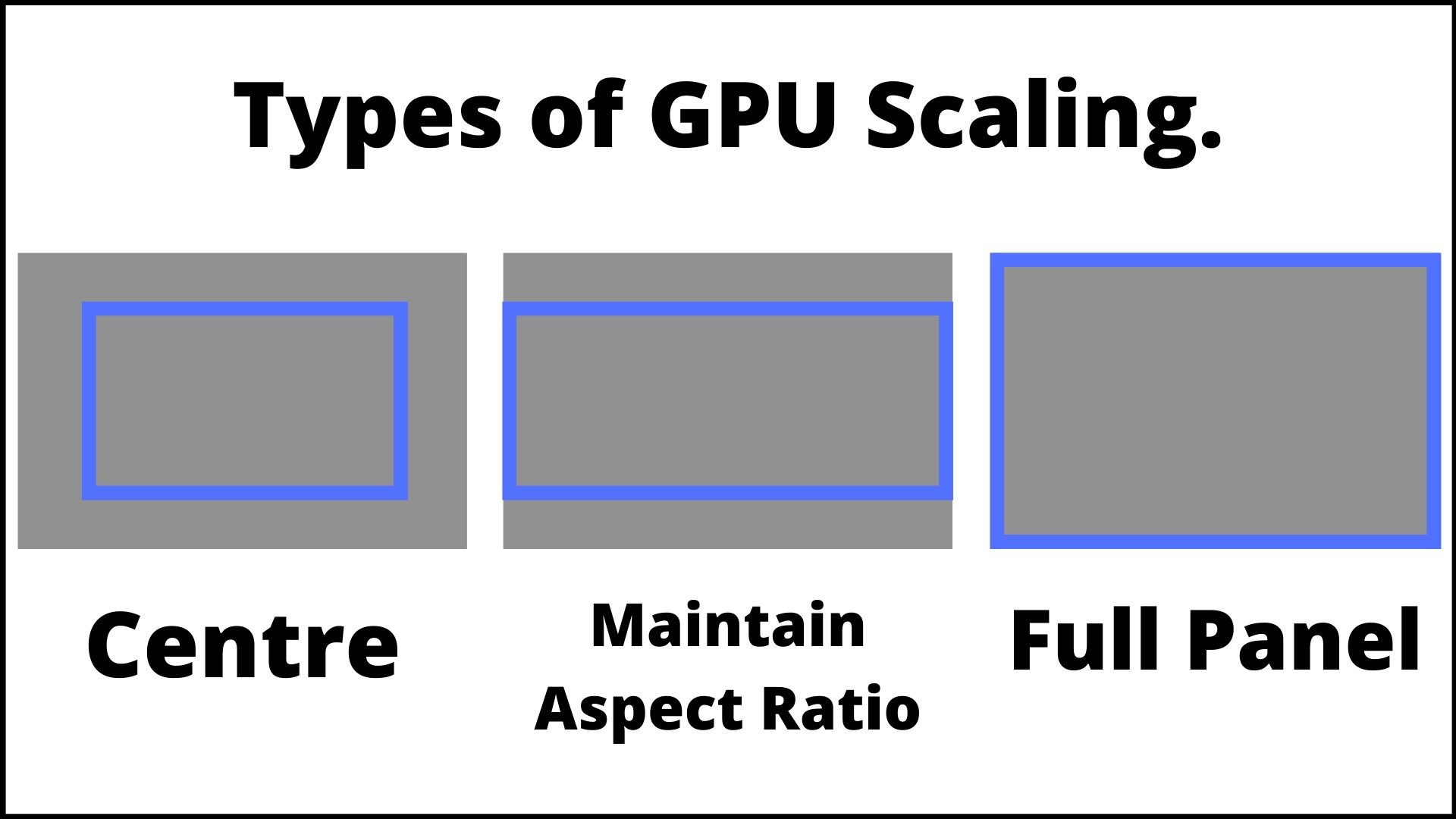
Turning Your GPU Scaling on or off
Being a very popular feature, it is available on both AMD and Nvidia’s discrete graphics cards, and as we discussed above, it allows you to scale up an older game to fit best on your modern widescreen display. Let’s see how you can enable or disable GPU scaling on your PC.
#1- AMD Graphics Card (Using AMD Catalyst Control Centre)
- Right-click on your desktop.
- Select the “AMD Catalyst Control Centre” option and open it.
- On your right, you’ll see a list of options, select “My Digital Flat Panels”
- Now, select Properties (Digital Flat Panel)
- Now, you’ll see a checkbox in the middle of the window saying “Enable GPU Scaling”,
- Select your preferred type of GPU scaling, and select the checkbox to enable GPU scaling.
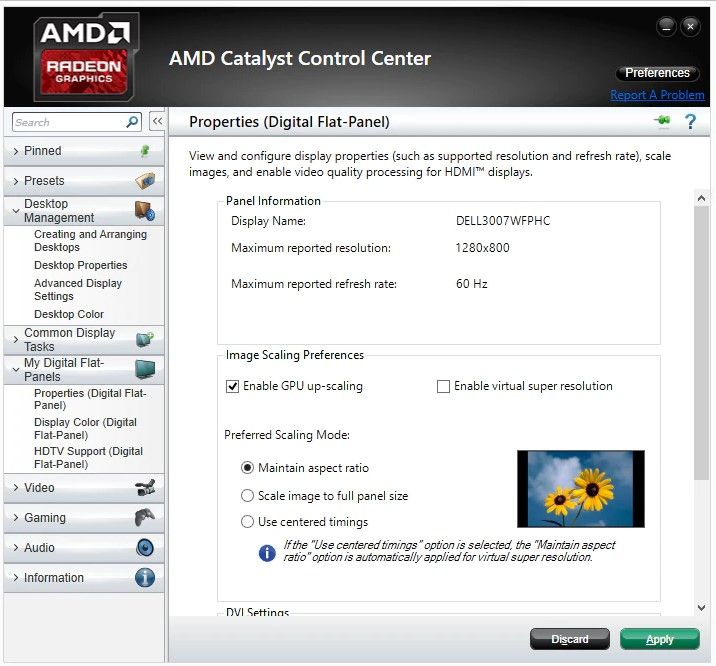
#1.1 Using The AMD Radeon Settings
- Right-click on your desktop.
- Select the “AMD Radeon Settings” option and click on it to open it.
- Click on the Display tab.
- From there, select the GPU Scaling option and turn it on.
- Then, select your preferred type of GPU scaling from the drop-down menu (located right next to on/off option).
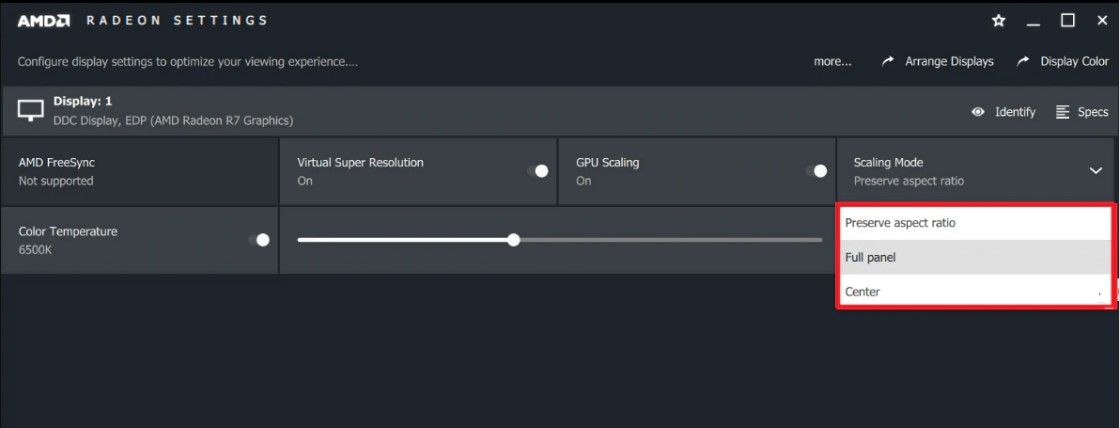
#2- How To Turn on GPU Scaling with An NVIDIA Graphics Card
- Right-click on your desktop,
- Select the “NVIDIA Control Panel” option; click it to open it.
- On the left, you’ll see a list of settings, locate the “Display” section.
- Underneath the Display section, click on “Adjust desktop size and position”.
- Now, click and open the drop-down menu labeled as “Perform scaling on” and select “GPU”.
- From here, select your preferred type of GPU scaling,
- And make sure to mark the checkbox saying “Override the scaling mode set by games and programs”.
- Apply the settings, and you’re, finally, good to go!
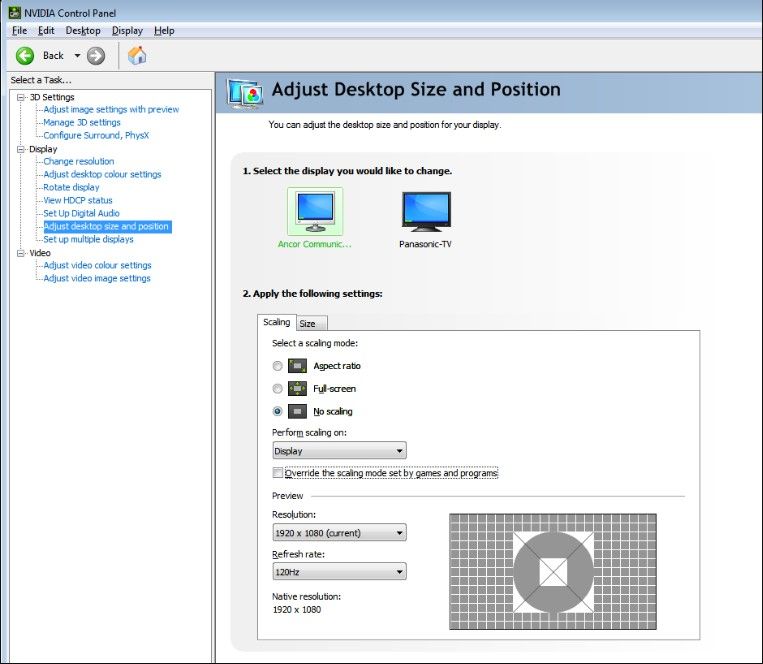
#3- How To Enable GPU Scaling On Intel Graphics
- Right-click on your desktop.
- Select the “Intel HD Graphics Control Panel” option to open it.
- You’ll now see a bunch of big icons, select the “Display” icon.
- Under the “Scaling tab”, select your preferred type of GPU scaling.
- Lastly, click on Apply to apply (duh) the new settings, and that’s it.
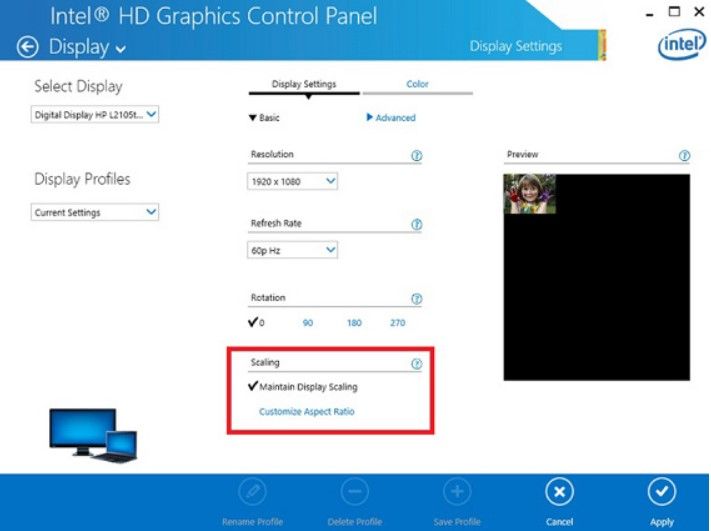
Conclusion: Is GPU Scaling Better?
This is an amazing feature for retro gamers looking to play older tiles with mismatched aspect ratios to their modern displays.
It allows you to play at the original quality without losing detail and doesn’t even tax the card that much.
However, since your graphics card is working slightly harder, you can notice input lag that can affect your gameplay immersion. That being said, the added latency is not that noticeable, and the better monitor you have, the less noticeable it will be.
It can be much better than your monitor’s native scaling because the output is directly coming from what your graphics unit is rendering in real-time. Display scaling has gotten significantly better over the years though, and in some cases, it might be better to enable that instead of using your graphic card’s scaled up output.
Unless your hate for black bars around your game’s window is on an all-time high, GPU scaling is a pretty sweet feature to have.
More content:
- Your ultimate guide to fixing gpu coil whine
- Does graphics card affect fps
- Does refresh rate affect fps
- What is AMD rage mode? Is it worth it?
- GPU artifacts: causes and how to fix it?
Frequently Asked Questions (FAQs)
Question 1- Should I turn on GPU scaling?
You should turn it on if you’re playing older games that are made to run on squared aspect ratios like 4:3 and 5:4, games that do not fit properly on modern widescreen displays. It can allow those to appropriately fit your 16:9 display and output a sharp image without any loss in details and quality.
Question 2- Is GPU scaling good or bad?
It is a great feature that essentially breathes new life into old games. It can allow you to enjoy those games on your modern displays without any hassle at whatever resolution you desire. Only when you force an application to stretch edge to edge unnaturally on a screen does this feature tend to produce a blurry and lossy image.
Question 3- How do I turn off NVIDIA scaling resolution?
You can not turn off scaling on custom resolutions but if you are running on a standard resolution then open the NVIDIA Control Panel, select the “Adjust desktop size and position option” and from there, select “Perform scaling on” and select “Display” and make sure to uncheck the checkbox saying “Override the scaling mode set by games and programs”. apply the settings, and you’re golden.

